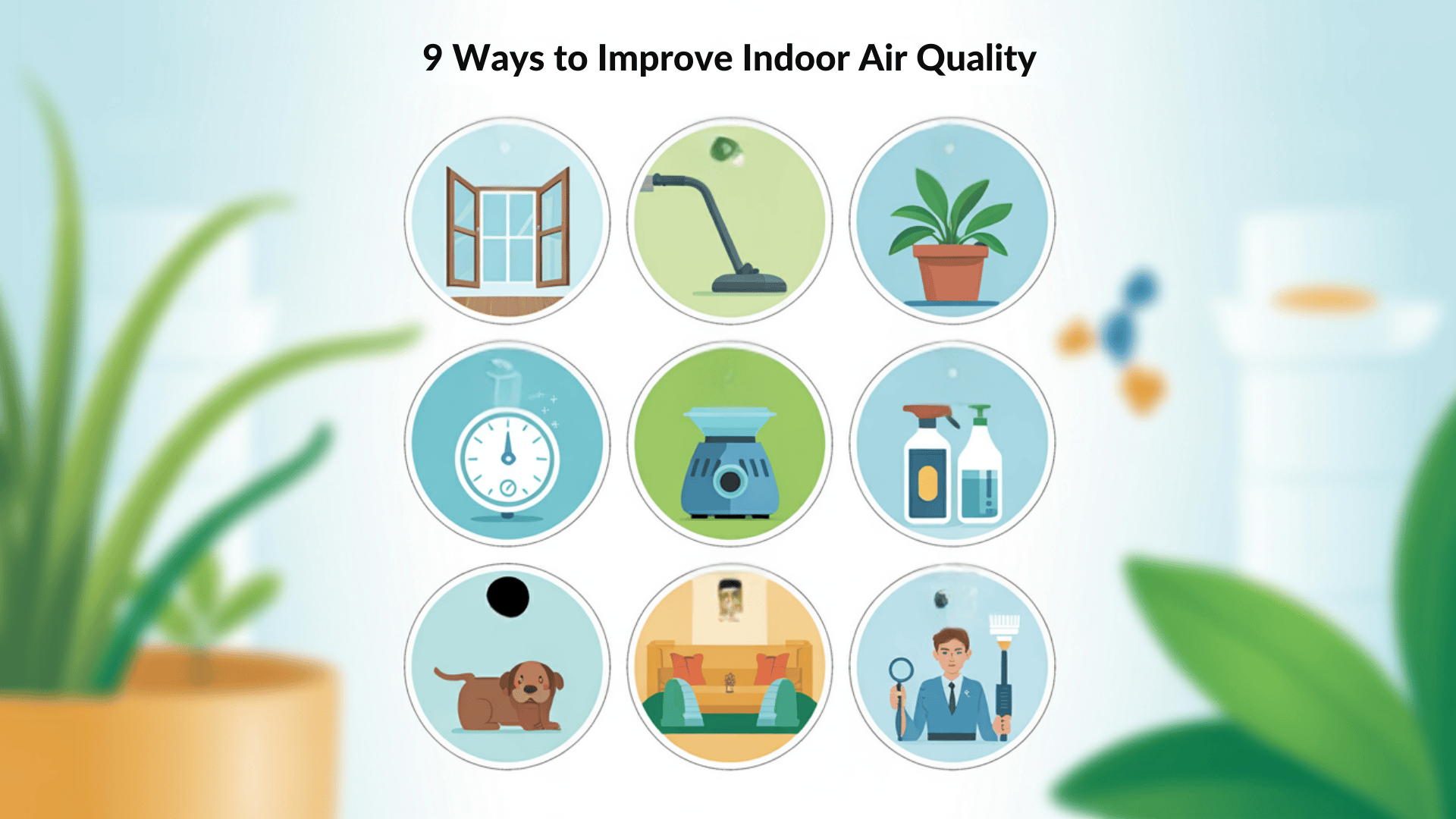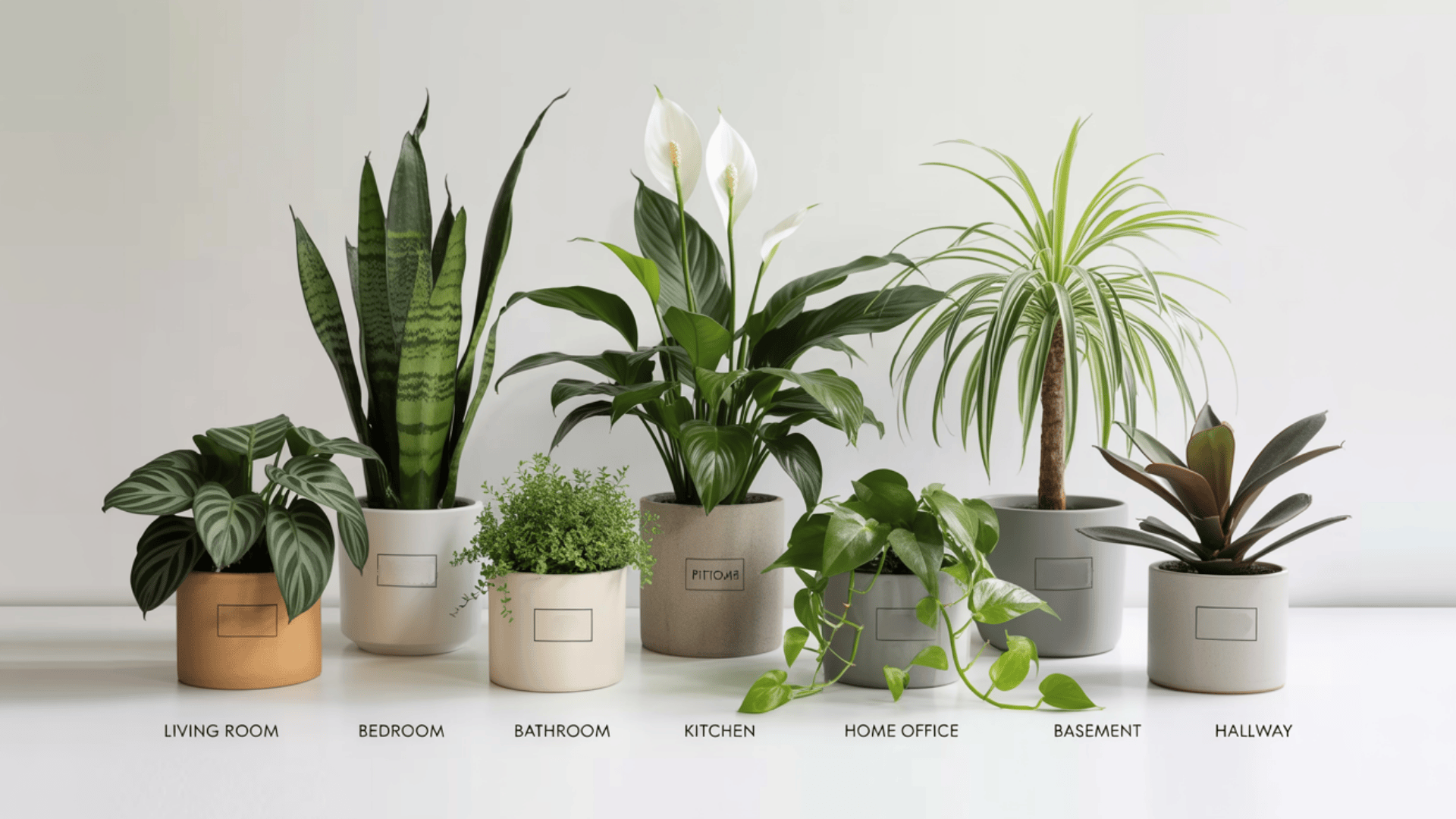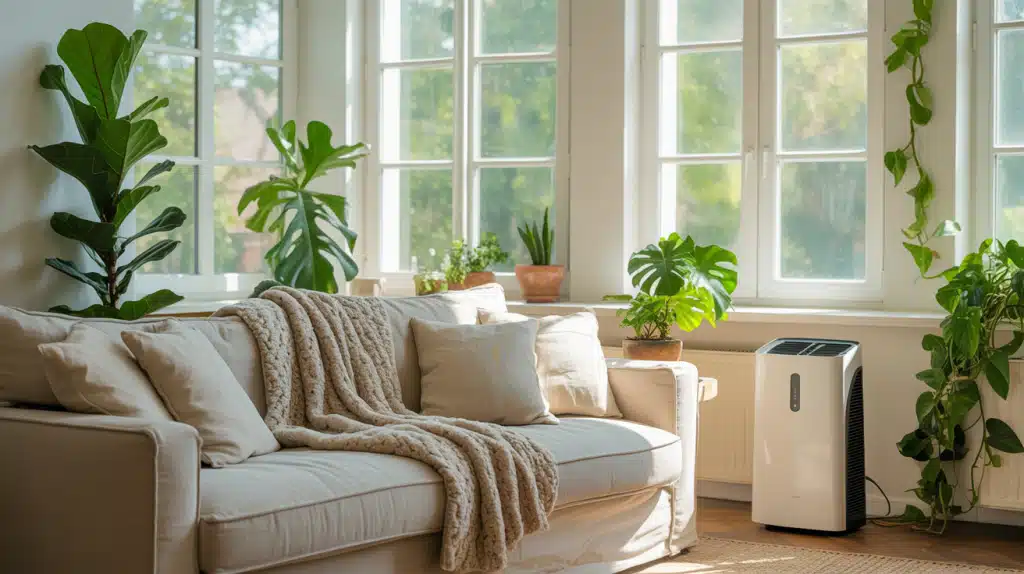Does your home feel stuffy or make you sneeze more often? You’re not alone. Most people spend 90% of their time indoors, yet indoor air can be 2-5 times more polluted than outdoor air.
Poor indoor air quality affects your health, sleep, and daily comfort in ways you might not even realize.
Many homes trap dust, pet dander, and chemical fumes that build up over time. Even new furniture and carpets can release harmful gases for months.
The good news? You don’t need expensive equipment or major renovations to breathe cleaner air at home,
In this blog, I’ll show you practical ways to improve your indoor air quality using methods that actually work. These tips are easy to follow, budget-friendly, and perfect for any home.
Why Indoor Air Quality Matters More Than You Think
Indoor air problems come from many sources. Dust, pet hair, cleaning products, and cooking all add particles to your air. Even furniture and carpets release chemicals over time.
This creates a buildup of pollutants that can’t escape naturally.
Common signs of poor indoor air quality include:
Poor air quality shows up through physical symptoms and environmental clues in your home.
- Frequent headaches or fatigue
- Increased allergies or asthma symptoms
- Dry skin and irritated eyes
- Trouble sleeping or feeling drowsy
- Strong odors that linger
- Visible dust on surfaces quickly after cleaning
Poor air affects everyone differently. Children, the elderly, and those with breathing problems are most affected.
But even healthy adults notice better energy and sleep when air quality improves. Studies show that people working in buildings with better air quality score 15% higher on cognitive tests.
Your brain actually works better when you breathe cleaner air.
9 Proven Methods to Improve Indoor Air Quality

Here are the most effective ways to clean your home’s air and create a healthier living space.
Method 1: Improve Ventilation
Fresh air circulation removes stale air and brings in clean oxygen. Good ventilation prevents pollutants from building up inside your home. This is the fastest way to see immediate air quality improvements.
Quick Start Tips:
- Open Windows Strategically
- Use Exhaust Fans Properly
- Create Cross-Ventilation
Method 2: Control Dust and Allergens
Dust contains dead skin, fabric fibers, and dust mites that float in your air. Regular cleaning with the right techniques removes these particles before they circulate. Focus on areas where dust collects most.
Essential Cleaning Methods:
- Vacuum with HEPA Filters
- Wash Bedding in Hot Water
- Dust with Damp Cloths
Method 3: Add Air-Purifying Plants
Certain houseplants naturally filter toxins from indoor air while adding oxygen. Plants work 24/7 to clean your air and improve humidity levels. Choose varieties that thrive in your lighting conditions.
Plant Selection Guide:
- Select the Right Plant Types
- Place Plants Strategically
- Care for Plants Properly
Method 4: Use Air Purifiers and Filters
HEPA air purifiers and filters capture 99.97% of airborne particles including dust, pollen, and pet dander. They work especially well in bedrooms and high-traffic areas. Replace filters regularly for best results.
Equipment Essentials:
- Choose HEPA Filter Systems
- Size Units for Your Rooms
- Maintain and Replace Filters
Method 5: Control Humidity Levels
Keep indoor humidity between 30-50% to prevent mold growth and dust mite problems. Too much moisture creates mold while too little dries out your airways. Monitor levels with a simple humidity gauge.
Moisture Management:
- Monitor Humidity Levels
- Reduce Excess Moisture
- Add Humidity When Needed
Method 6: Remove Chemical Pollutants
Many household products release harmful chemicals into your air through VOCs (volatile organic compounds). Switch to natural alternatives and improve ventilation when using chemicals. Store products in sealed containers away from living spaces.
Natural Alternatives:
- Replace Harsh Cleaners
- Choose Natural Alternatives
- Improve Chemical Storage
Method 7: Manage Pet-Related Air Issues
Pet dander, hair, and odors significantly impact indoor air quality. Regular grooming and cleaning reduces airborne particles from pets. Use air purifiers in rooms where pets spend time.
Pet Owner Solutions:
- Groom Pets Regularly
- Clean Pet Areas Weekly
- Use Pet-Specific Air Filters
Method 8: Maintain Clean Living Spaces
Clutter collects dust while regular cleaning prevents particle buildup. Focus on surfaces that gather dust quickly like blinds, fans, and electronics. Keep living spaces organized for easier maintenance.
Organization Tips:
- Declutter Dust-Collecting Items
- Clean High-Impact Areas
- Establish Cleaning Routines
Method 9: Know When to Call Professionals
Some air quality problems require expert help like mold remediation or HVAC system repairs. Professional air quality testing identifies specific pollutants and their sources. Don’t ignore persistent problems that home methods can’t solve.
Professional Services:
- Identify Serious Problems
- Choose the Right Professionals
- Schedule Regular HVAC Maintenance
Best Air-Purifying Plants for Different Rooms

Different rooms have different lighting and humidity conditions that affect plant growth. Choose plants that match your room’s environment for the best air cleaning results.
- Living Room: Snake plants and rubber trees work well in bright spaces with lots of foot traffic.
- Bedroom: Peace lilies and aloe vera release oxygen at night and help you sleep better.
- Bathroom: Boston ferns and spider plants thrive in high humidity and low light conditions.
- Kitchen: Pothos and English ivy handle cooking odors and grease particles in the air.
- Home Office: ZZ plants and philodendrons need little care while you focus on work.
- Basement: Cast iron plants and Chinese evergreens survive in dark, damp spaces.
- Hallways: Dracaena and corn plants work in low-light areas with occasional foot traffic.
Common Indoor Air Quality Mistakes to Avoid
Even with good intentions, many homeowners make errors that worsen their air quality. These mistakes can cancel out your improvement efforts. They can also create new problems. Here are the most common air quality mistakes and how to avoid them.
| Common Mistake | Why It’s Bad | What to Do Instead |
|---|---|---|
| Overwatering houseplants | Creates mold in soil. Releases spores into air. | Check soil before watering. Use pots with drainage holes. |
| Using too many air fresheners | Adds chemical VOCs. Masks odors instead of removing them. | Use essential oil diffusers. Address odor sources directly. |
| Closing all windows in winter | Traps stale air inside. Increases pollutant levels. | Crack windows 10-15 minutes daily. Even in cold weather. |
| Ignoring exhaust fans | Allows moisture to spread. Cooking particles go throughout home. | Run bathroom fans 30 minutes after showers. Use kitchen fans while cooking. |
| Placing air purifiers in corners | Reduces air circulation. Makes cleaning less effective. | Put purifiers in central locations. Choose spots with good airflow. |
How Often Should You Replace Air Filters?
Filter replacement schedules depend on your home’s specific conditions including pets, allergies, and outdoor air quality.
Homes with multiple pets need monthly changes while others can wait longer. Learn the signs that indicate when your filters need immediate replacement.
Dirty filters make your HVAC system work harder and use more energy. They can also spread dust and allergens throughout your home instead of catching them.
Standard Schedule:
- Basic fiberglass filters: Every 30 days
- Pleated filters: Every 60-90 days
- HEPA filters: Every 90-120 days
- Washable filters: Clean monthly
The Bottom Line
Improving your indoor air quality doesn’t require expensive equipment or major home changes. Start with better ventilation by opening windows strategically and using exhaust fans properly.
Remove common pollutants through regular cleaning and smart product choices. Add natural air purifiers like houseplants, and maintain proper humidity levels between 30-50%.
The key is consistency. Small daily habits like making beds, removing shoes, and keeping doors open create lasting improvements.
Remember, you’ll notice results gradually. Better sleep, fewer headaches, and reduced allergy symptoms often appear within a few weeks of making these changes.
What’s your biggest indoor air quality challenge? Have you tried any of these methods, or do you have questions about getting started? Share your thoughts in the comments below!





































